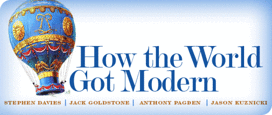One of the great accomplishments of modernity is the institutionalization of pluralism and religious tolerance. While not unknown in antiquity or pre-modern times, pluralism and tolerance usually meant no more than the official state religious order granting a protected but clearly second-class status to adherents of other faiths. Thus in Rome up to the 4th century, the gods of conquered peoples were given lesser places in the polytheistic pantheon, but their worship was still allowed as long as it was joined to recognition of the divinity of the emperor (peoples who refused the latter, like the Jews of Palestine, lost that toleration in a hurry!).
In the Ottoman Empire, Christians and Jews could flourish and play important professional roles, but were excluded from government and had to pay special taxes. A similar status held for non-Anglicans in Britain, even after the Toleration Act; they could openly practice their religions but were barred from state offices, while Anglican bishops still had reserved places in the House of Lords. It was really only with the American and French Revolutions of the 18th century that it became official state policy not to promulgate any special restrictions or privileges on the basis of religion, but leave that a matter of individual conscience.
This has sometimes been confused with a different aspect of modernity, namely the reduction of formal religion and worship in everyday life, and its replacement by secularism or humanism. It is true that in many parts of Europe, governments seek to act as if religion had no place in deciding moral or policy issues, and many people have withdrawn from religious participation and commitment. It is also true that on matters of studying nature, objective science has replaced religion as the basis for seeking truth. In these respects, secularism has grown. Yet in the United States, Africa, Latin America, and most of the Middle East and much of Asia, secularism is mild or in retreat. Commitment to both religious worship and religious belief, including the formation of policy (e.g. abortion) based on such beliefs, remains strong. What makes these countries ‘modern’ is not the absence of religion, but the absence of a state-chosen and state-enforced religion that relegates adherents of other faiths to less than full citizenship. What is distinctively modern is the sharp separation of religion and citizenship, so that the latter can be enjoyed fully regardless of which religion (or no religion at all) a person follows.
This needs to be kept in mind when considering the ‘dark side’ of modernity. Jihadists — even with automatic weapons and plastic explosives — are pursuing a very anti-modern goal in seeking to purge their societies of non-believers, and not merely to make religion a factor in shaping policy but to impose a particular religion’s law as the uniform law of the land for all. Christians of course did the same thing in Europe for many centuries, but that was in a pre-modern era.
While there is an appealing tendency to think of ‘modern’ societies as being prone to be especially evil, because nationalism and technical-rationality seem to be devoid of traditional morality (think Naziism and the Holocaust), which at least was woven into traditional religio-political states, this is an illusion. Vast piles of skulls, mass rapine, rivers turned red with blood — these are familiar aspects of human conquest from biblical times through the Mongol conquests. Efforts to massacre people and create genocides are carried out more widely with machetes than with gas chambers. A lack of respect for the basic human rights of other societies, or lower classes in one’s own society, is rooted in the pre-modern mentality of identity-groups, dynastic loyalties, and an innate hierarchy of people (with male rulers on top, and females and slaves on the bottom, as part of the natural order). The modern view of the individual — egalitarian, endowed with universal rights, free to practice a religion of choice and express her beliefs, free to enter into agreements of marriage and work or not — is a much more moral view than the pre-modern view rooted in particularistic identities and hierarchies (racial, ethnic, or otherwise.)
The truly great evils of the modern world have arisen when modern science and technology were placed in the service of such pre-modern beliefs. Nazi racial science speciously classified the races on their worthiness (aryan to mongol, with Jews at the bottom) and thus justified its actions to purify Europe’s population. European colonialism became most abhorrent when it saw regions and peoples as entitled to different levels of rights and respect depending on their level of “civilization” as measured by a European pseudo-scientific yardstick.
In short, an appreciation of what is truly modern can allow one to be optimistic about a future with less cruelty and evil; what is important is that we recognize that individual freedom and social equality are no less vital innovations, and no less critical components of modern societies, than are planes, trains, and missiles.

